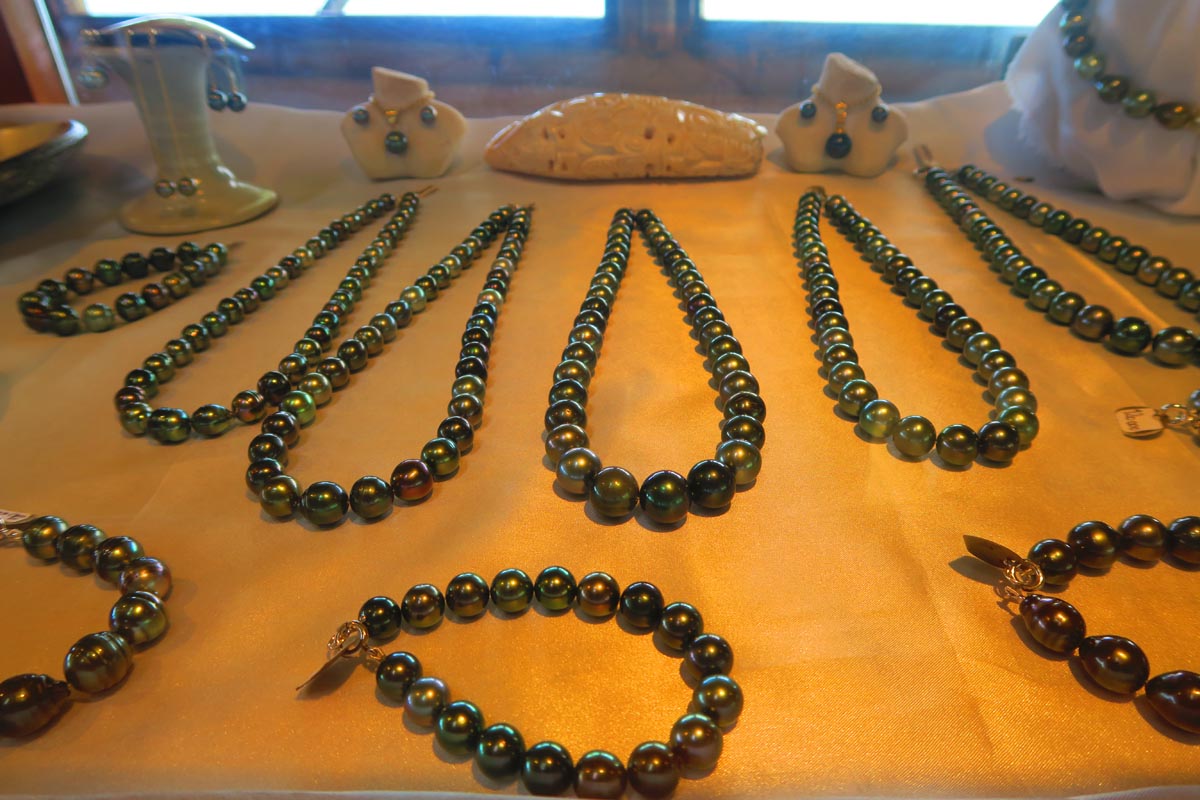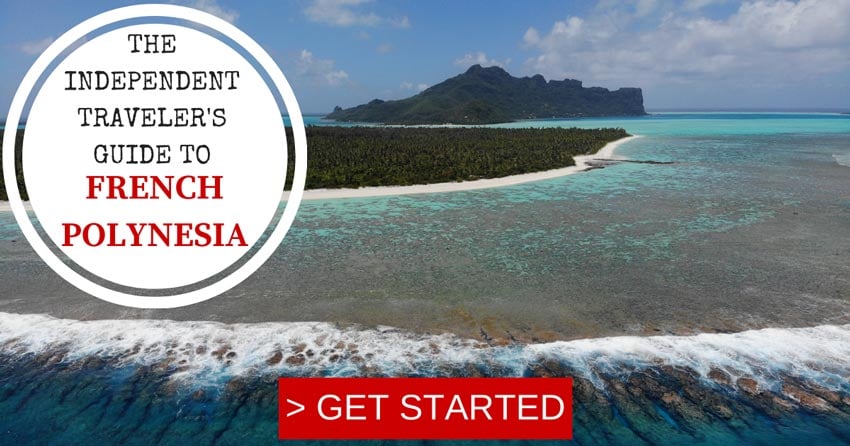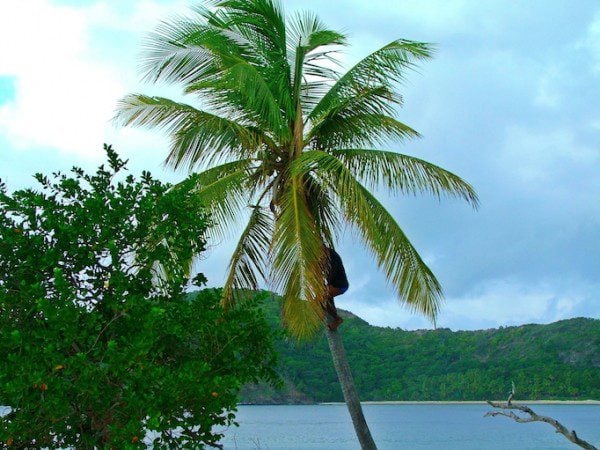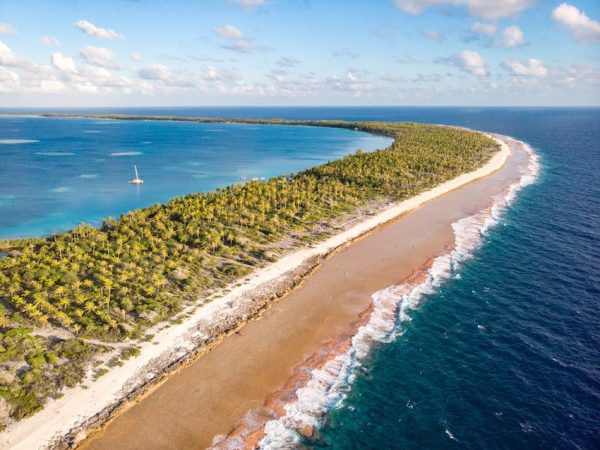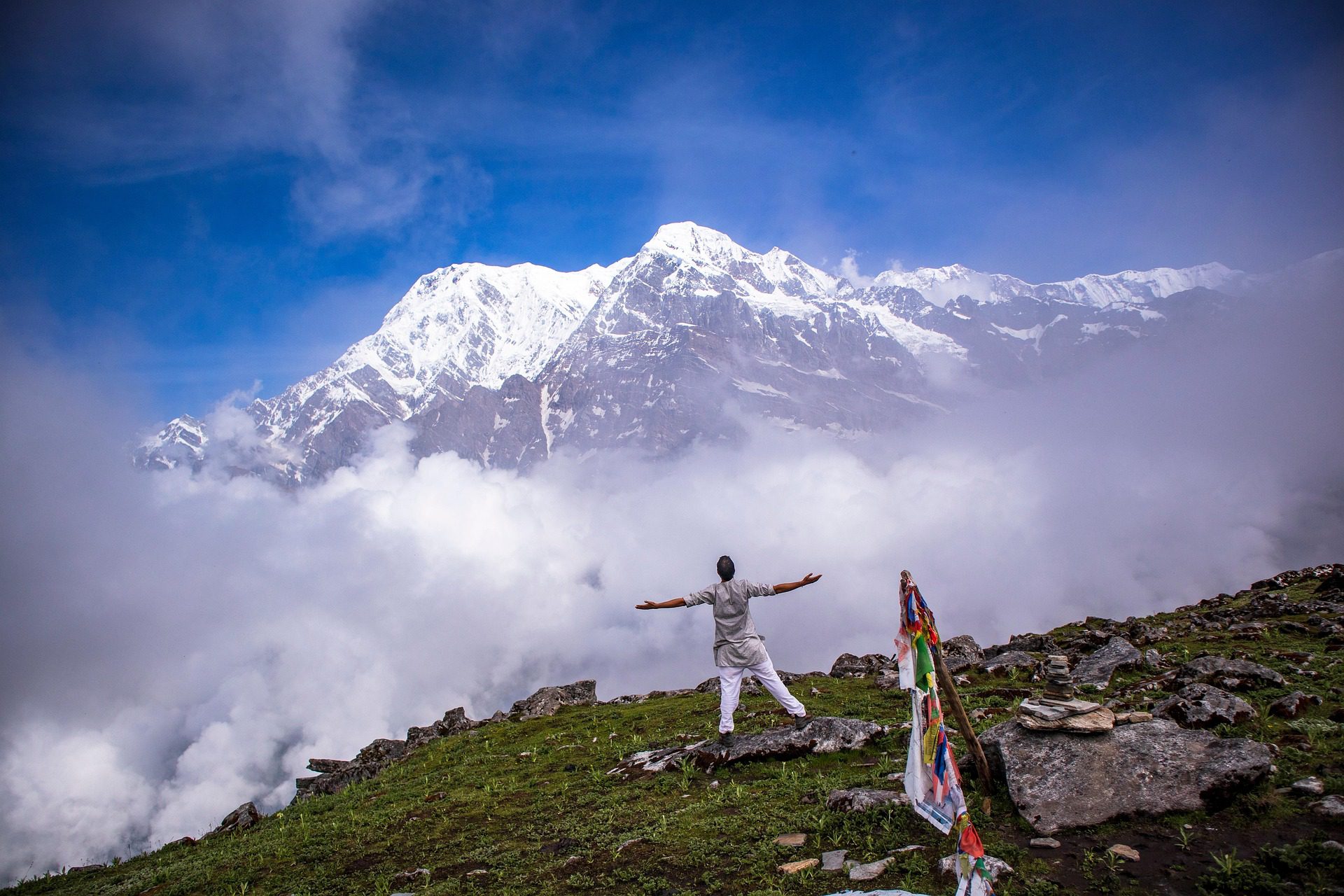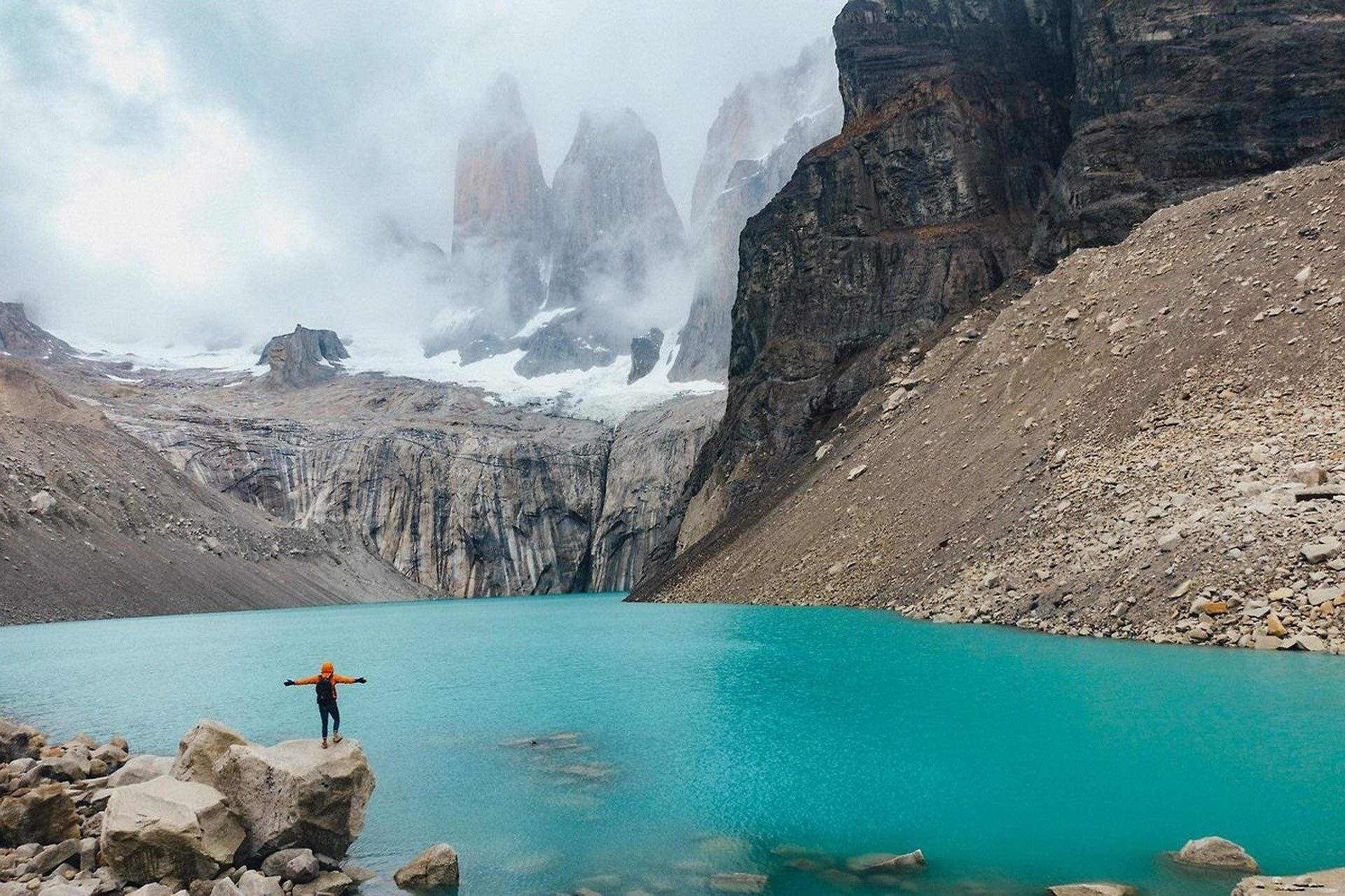Gambier Islands Travel Guide
One of the least visited archipelagos in French Polynesia, the Gambier Islands are encircled by a magnificent lagoon where black pearls are as abundant as fish. Regarded to be the birthplace of Catholicism in French Polynesia, the islands are home to out-of-place whitewashed cathedrals, a testament to the archipelago’s tragic past. For those seeking to get off the beaten track, this Gambier Island travel guide will help you plan a visit to “the forgotten islands” of French Polynesia.
About this Gambier Islands Travel Guide
Having explored over a dozen islands in French Polynesia, visiting the Gambier Islands was a proud achievement. Its remoteness, interesting history, pristine nature, and lack of mass tourism are the ingredients that fueled my curiosity. I visited the Gambier Islands as part of a cruise from Tahiti to Easter Island. The information in this Gambier Islands travel guide is based on my experiences and extensive research.
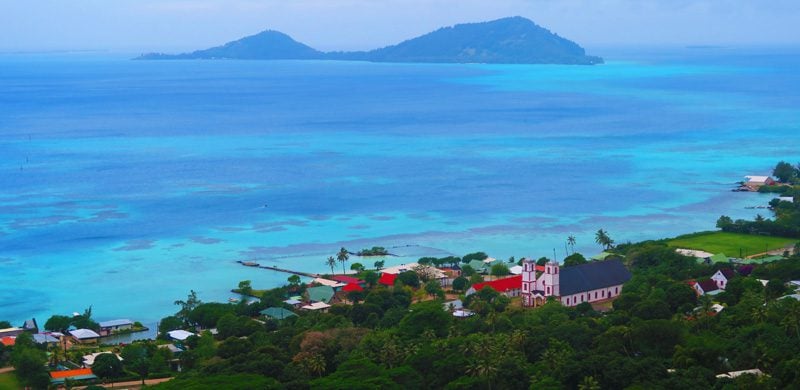
Heading to French Polynesia? In-depth island guides to all 5 archipelagos await you, including sample itineraries and essential travel tips & tricks.
Tahiti, Tailor Made!
The Islands of Tahiti are among the last places to be colonized by mankind, 118 islands, each with its unique personality.
Get expert advice and assistance with planning your trip to the destination where tropical dreams come true!
Where Are the Gambier Islands?
The Gambier Islands are one of the five archipelagos that make up French Polynesia. The islands are located 1,600 km southeast of Tahiti and about 700 km west of Pitcairn Island. The Gambier Islands consist of five ‘high’ islands and 18 low-lying islets (motu) – all inside a common lagoon. A few outlying atolls are also considered part of the archipelago. The major islands in the Gambiers are Mangareva (with the capital Rikitea), Taravai, Aukena, and Akamaru. The archipelago’s total population currently numbers approximately 1,300 residents, most of whom live in the capital – Rikitea.
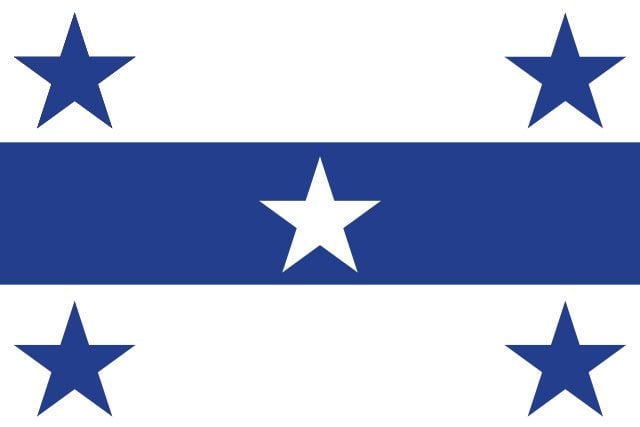
Why Visit the Gambier Islands?
Getting to the Gambier Islands is mighty tough (and expensive), but this is just an added ingredient in the allure of an archipelago once known as “the forgotten islands”. Visitors to the Gambier Islands are primarily interested in the history of the island group, more specifically its early Catholic days manifesting in marvelous churches constructed from coral lime. In addition, the Gambier’s exquisite lagoon is home to a thriving black pearl industry and to dreamy beaches that do not require sharing with others.
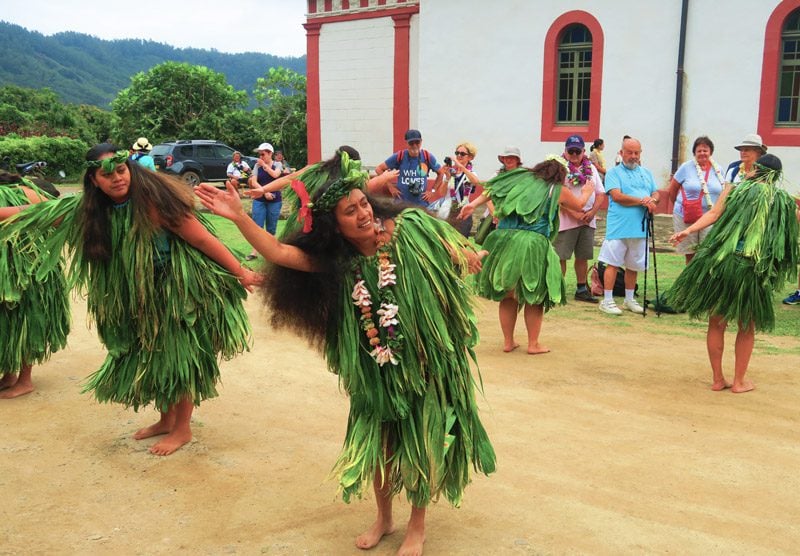
- A brief history of the Gambier Islands [This Page]
- Gambier Islands travel tips [This Page]
- The top things to see and do in the Gambier Islands
Brief History of the Gambier Islands
The Gambier Islands are named in honor of Baron James Gambier (1756-1833), an English admiral and supporter of the London Missionary Society who sponsored the inaugural expedition to visit the Gambier Islands aboard the Duff. However, the history of the Gambier Islands stretches back much further in time, likely to between 900-1200 AD. During this period, Polynesian explorers discovered the islands, likely arriving from the Tuamotu Atolls to which the Gambier Islands are in some way their natural extension.
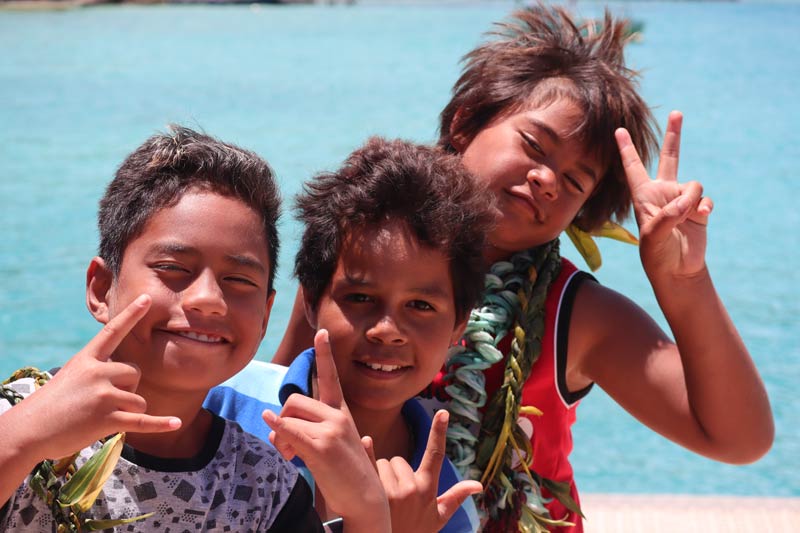
The tribes that settled the archipelago would go on to form the Mangarevan Empire, which thrived and exerted its powers far beyond the archipelago’s boundaries. Mangarevans traded with neighboring island groups and would even settle the remote Pitcairn Islands that are believed to have served as ‘mining outposts’ for the empire. What Mangarevans lacked, their trading partners would supplement. This included obsidian – a volcanic glass not found in the Gambier Islands that was a highly coveted commodity for its use in tools and in weapons.
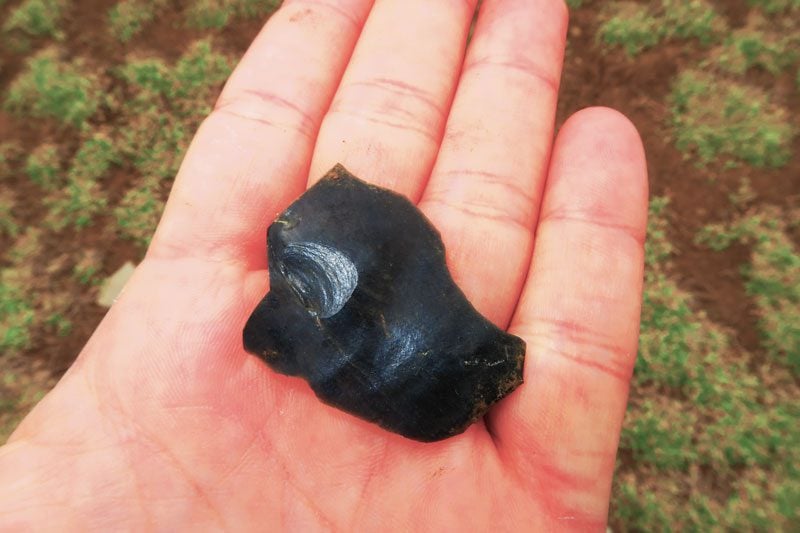
Mangarevans formed a highly stratified society, with a clear hierarchical structure that included many taboos. At the very top, the high chief with his endowed mana controlled all aspects of daily life. Beneath him were the priests along with the experts (boat makers, fishermen, etc). Always vying for power were the professional warriors, who on the one hand were needed in battle but on the other hand always ‘challenged’ the status quo. With plenty of food and space to go around, everything worked well for the Mangarevan Empire (see video of a traditional Mangarevan dance).
However, when the population level began to sharply rise, lush forests were cleared to make room for agricultural plots (slash and burn). This proved to have a disastrous effect on the islands. Heavy rains would now cause soil erosion and the failure of crops. Moreover, not enough healthy wood was available to build canoes for trading or for fishing. Over the course of a few decades, the population of the Gambier Islands spiraled into a bloody civil war in which cannibalism was part of the game.
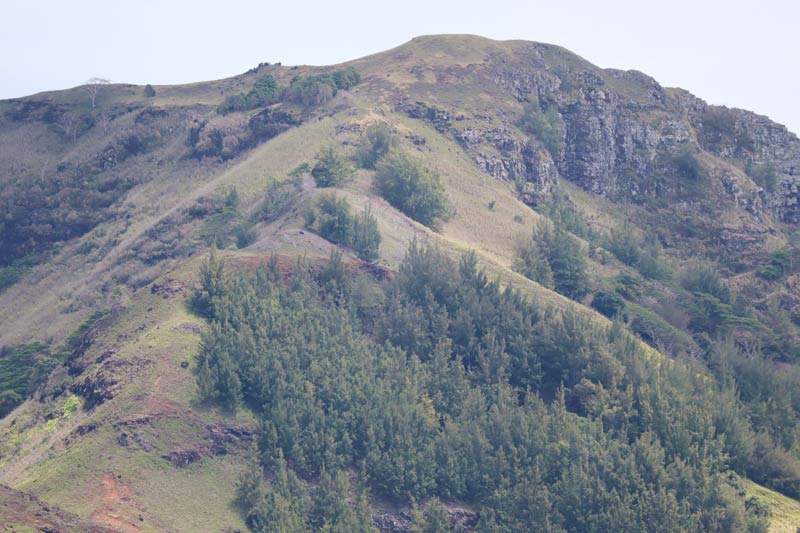
Into this vacuum enter Christian missionaries. First, it were the English Protestants who arrived in 1797 aboard the Duff but did not stick around. In 1834, the Catholic French enter the scene. Father Honore Laval from the Congregation of the Sacred Hearts of Jesus and Mary leads a mission to save the savage cannibals from themselves. With a surplus of motivation and self-confidence, he manages to win the hearts of the locals and persuades high chief Maputeoa to convert to Christianity, a move that makes Laval the de facto ruler of the archipelago.
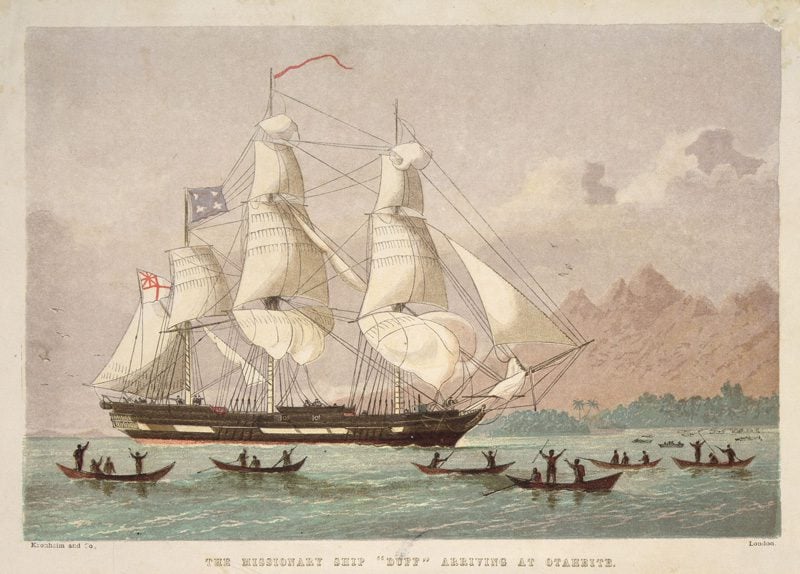
Laval immediately sets out on a grand reform scheme that would transform the islands into a European-style Christian state. He first ordered the destruction of ancient temples, introduced a rigid constitution known as the Mangarevan Code and began the implementation of a megalomaniac and unnecessary construction project of churches, palaces, watchtowers, and religious institutions. Laval’s workforce consists of the subdued local population and funds are raised by taking over the island’s most precious tradable commodity – the black pearl.
The crowning achievement is the Cathedral of Saint-Michel, whose construction cost the lives of hundreds of islanders. Fashioned in Spanish style and made of bricks carved from the coral reef, its altar is adorned with hundreds of exquisite black pearls and magnificent mother-of-pearl shells. Saint-Michel can accommodate 1,200 worshipers, far beyond the demand of the dwindling local population by the inauguration date. Eventually, French authorities in Tahiti woke up and the mad priest was sent packing, not before succeeding in introducing Catholicism to Polynesia.
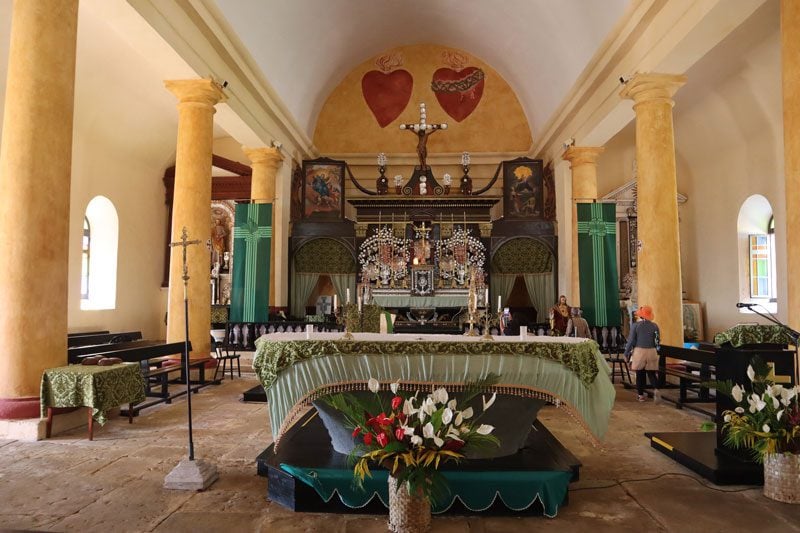
In 1881, France officially annexed the Gambier Islands. Due to their remoteness, the islands were seldom visited by outsiders apart from whalers and occasional explorers (among them famous writers of the time), though the archipelago did enjoy brief periods of economic boom, most recently during the French nuclear testing on neighboring Moruroa Atoll. The health effects of the controversial nuclear testing is still a hot topic today. At present, islanders make a living primarily from the black pearl industry, fishing, and copra.
Gambier Islands Travel Tips
This section of the Gambier Islands Travel Guide highlights essential travel tips for travelers seeking to visit the remote archipelago.
Recommended resources
Apart from this Gambier Islands Travel Guide, here are a few other resources to help you plan your visit, mind you, there isn’t a lot of literature on this remote archipelago.
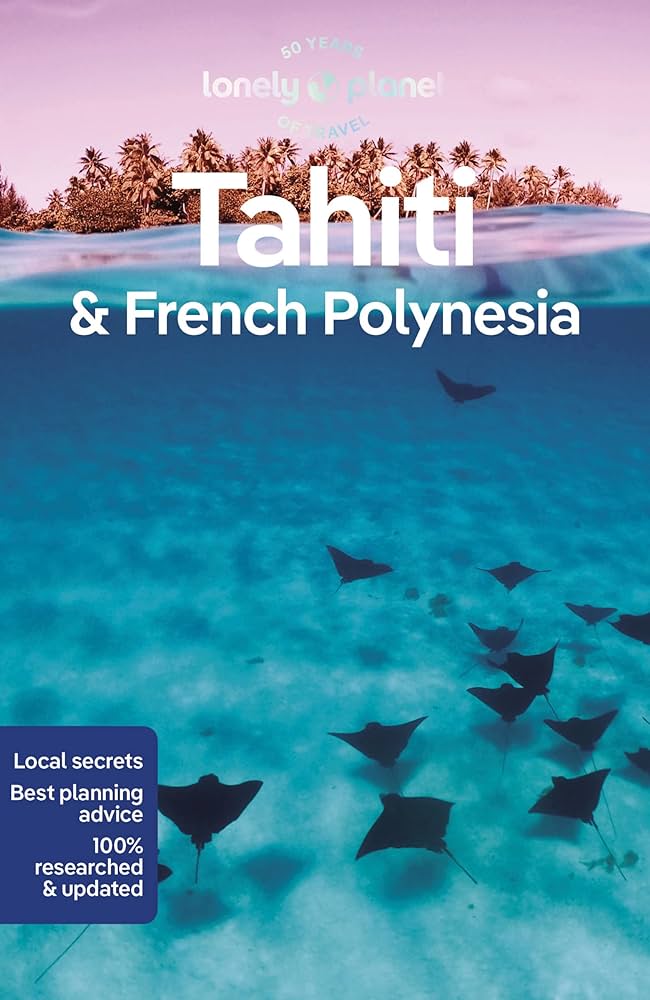
- The Independent Traveler’s Guide to French Polynesia: a free and comprehensive travel guide based on my extensive travels in the region.
- Tahiti Tourism: the official website of French Polynesia’s tourism board with a modest section devoted to the Gambier Islands.
- Lonely Planet: together with this Gambier Islands travel, this is a great planning resource.
- Hidden Tahiti & French Polynesia: a comprehensive guide book with a section on the Gambiers
- Manga Reva: the Forgotten Islands: the account of American artist Robert Lee Eskridge during an extended visit to the islands in the early 20th century.
How to Get to the Gambier Islands
At present, Air Tahiti offers biweekly flights from Tahiti to the Gambier Islands (about 4.5 hrs). The flights land on a narrow airstrip on motu Totegegie and a communal ferry takes passengers to Rikitea (approx 500 XPF for a single journey). Flight tickets are very expensive (approx $800 return) and are not included in any of the air passes currently offered by Air Tahiti.
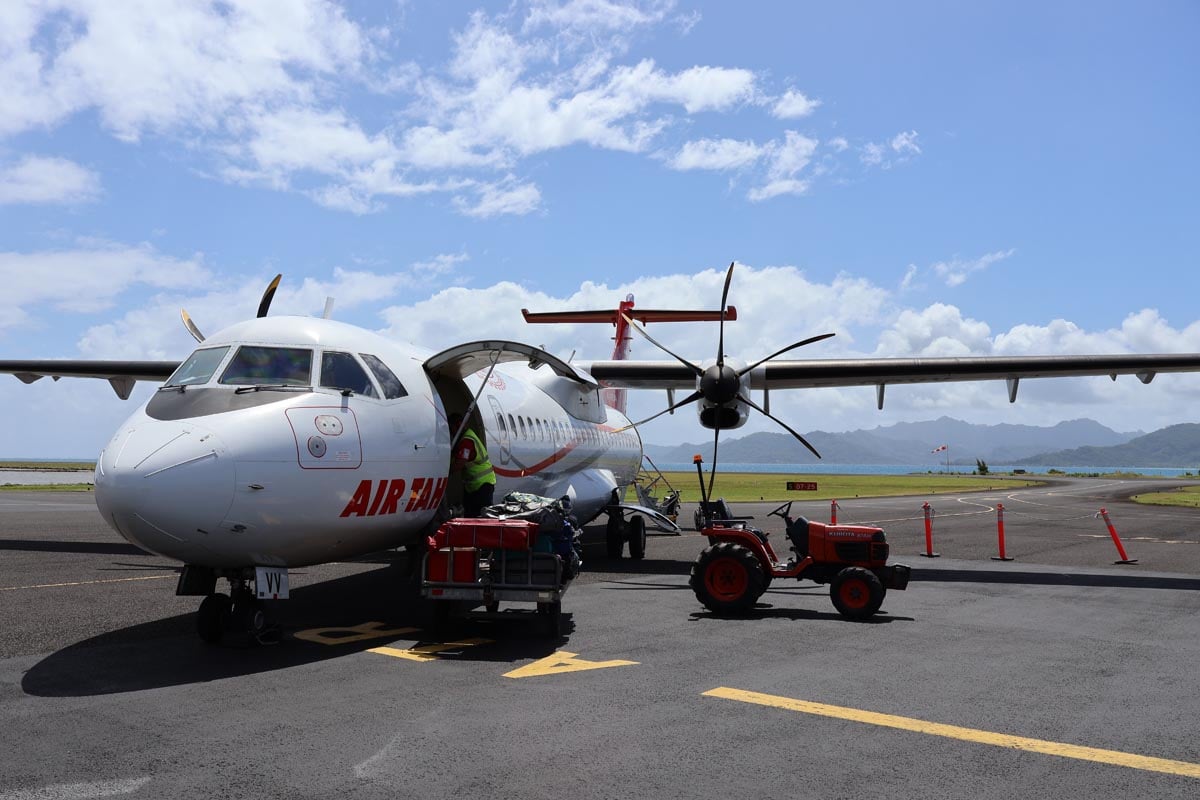
If you’re (very) flexible with your time, you could theoretically book a spot on the Nuku Hau cargo vessel, which services Rikitea once per month from Tahiti (contact@snp.pf | +689-40549954). You can also look for any yacht owners seeking travel companions or help on various forums. Lastly, you can visit the archipelago on a cruise ship, as I did.
When is the Best Time to Visit the Gambier Islands?
The Gambier Islands enjoy milder weather than Tahiti. The best months to visit are during the cooler and drier ‘winter’ months (June-August), with the warmest and wettest months being December-January. I visited the Gambier Islands during early October and the weather was quite cloudy and wet for the most part. From July to late September, humpback whales can be spotted.
How Long Should You Spend in the Gambier Islands?
In theory, about three full days would be enough. However, since the duration of your visit depends on flight/boat schedule, these factors will determine the length of your stay. The appeal of the archipelago lies in its remoteness and its magnificent lagoon, so having time to relax, getting to know the locals and to visit its special spots are all paramount.
Getting Around the Gambier Islands
The islands themselves are very small and can be covered on foot. On the largest island – Mangareva – locals will gladly offer you a ride in their 4X4. The challenge lies in getting from one island to another. For the visiting tourist, this will likely be done as part of a paid excursion via your pension or cruise. However, there is a communal ferry that connects the inhabited islands which theoretically can be used for island hopping, though you will need to return to Rikitea at night to sleep. Keep in mind that some sites are located on private land so even if you do independently make it to the island, you still need permission and/or guidance.
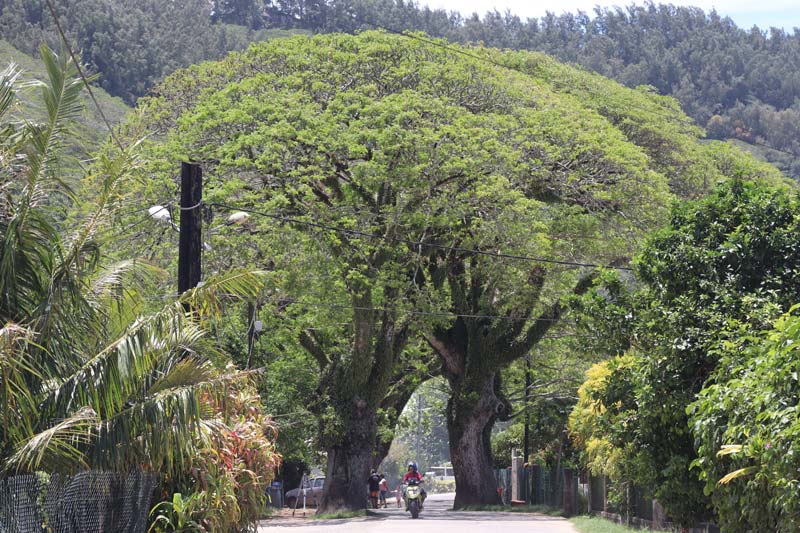
Where to Stay in the Gambier Islands?
If you won’t be visiting on a yacht or as part of a cruise, Mangareva will be your base for exploring the archipelago. At present, there is one Airbnb listing in the heart of Rikitea and three pensions listed below. All pensions should offer half-board stays (breakfast and dinner) as well as equipment for rent/free use such as bicycles or kayaks plus paid excursions to neighboring islands and motus. Keep in mind that some pensions only accept cash while others also accept major credit cards.
- Pension Maro’i: located in the heart of Rikitea by the pier. The pension might also be listed in Google Maps as “People Thank You”
- Pension Chez Bianca et Benoit: located on a hill in the vicinity of the small community of Atituti about a 15-minute walk from Rikitea.
- Pension Chez Jojo: located on the same side of Rikitea but on the north end of the island about 45 minutes by walk from Rikitea.
Money
At present, there is no ATM in the Gambier Islands, but the post office will change US Dollars or Euros. It is best to come with enough cash to cover your visit and to pay in advance for accommodation if possible.
What to Bring Back From the Gambier Islands?
The number one souvenir from the Gambier Islands is a black pearl. You might be able to find some for sale in the main village of Rikitea, but it’s also worth visiting the Robert Wan pearl farm on Aukena Island, where you can buy pearls in all categories (starting from about $50). In addition, it’s worth stopping at the local crafts school where students sell beautiful artwork carved from mother-of-pearl shells that are no longer in use. For those into Pacific fashion, it’s worth searching for Kaka’o a local hat woven from the grass that grows on the mountains (can take up to a week to weave).
